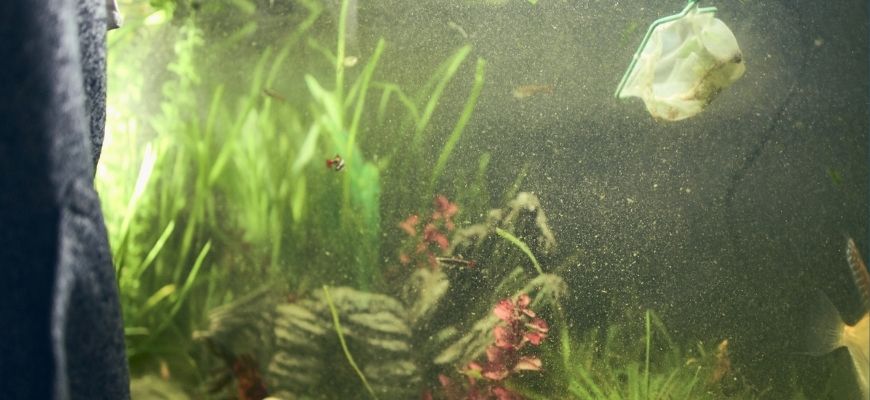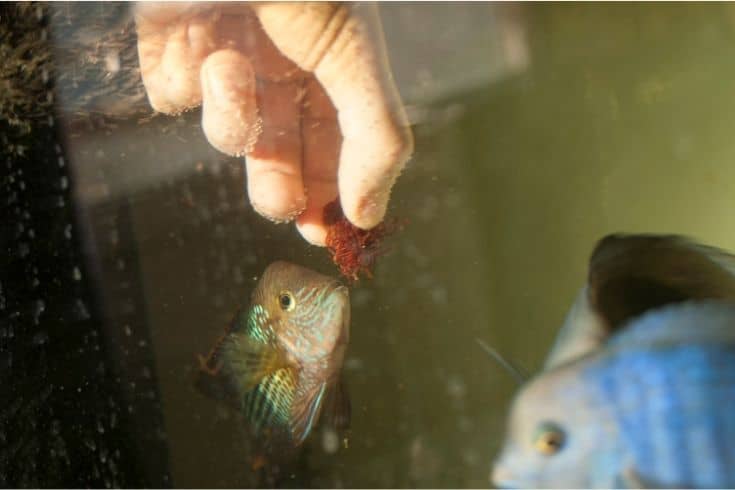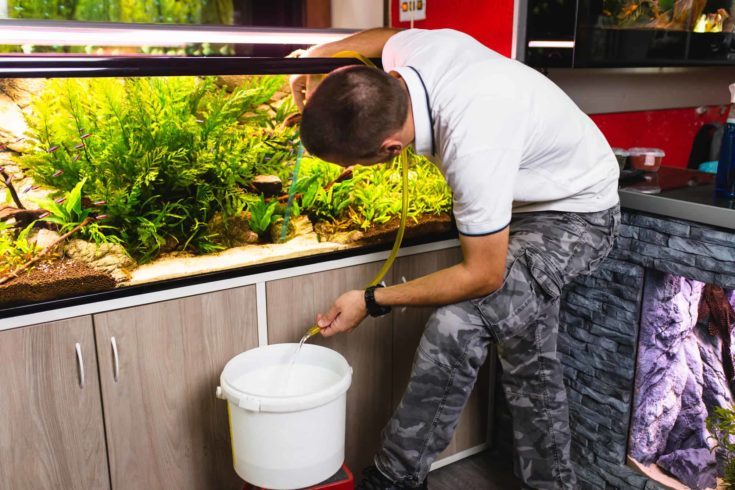Have you noticed a reddish tint on your fish’s gills? And why is your fish acting lethargic? Gill flukes are parasitic infections that can infect both freshwater and marine fish. These tiny, worm-like creatures attach themselves to your fish’s gills and feed off their blood. As the disease progresses, your fish may find it increasingly difficult to breathe.
Although the symptoms of gill flukes can be rather severe, the infection is relatively easy to prevent and treat. This post discusses how to identify these nasty pests, as well as how you can treat them at home with simple remedies!
What Are Gill Flukes?
Gill flukes are a type of flatworm that affects fish. Flukes that attack freshwater fish are known as monogenean flukes, which is a parasitic flatworm with the scientific name of Monopisthocotylea. They attach themselves to the skin, gill cavities, and mouthparts of many types of fish including catfish, goldfish, and cichlids.
Monogenean flukes are egg producers that breed by laying eggs in the host’s intestines. The larva will then hatch and go through a free-swimming stage before they attach themselves to the gills. The time between larva hatching and monogenean fluke infestations can be as short as one day, while the life cycle of the adult fluke can last up to a month.
In some cases, a fluke may attach itself further down on the fish’s body instead of its gills. This is usually due to another bodily infection already present in that area and will cause more severe damage than if it had attached itself elsewhere on the fish.
Signs and Symptoms
It is important to learn the signs and symptoms of gill fluke infestations in fish. If you can recognize these signs, then it is much easier to prevent an infestation before it has a chance to set in and become too severe for treatment. Here are a few key things to look out for:
Spots or Redness Near The Gills
The main symptom of this parasitic infection is the presence of spots or redness near the gills. This is caused by the flukes feeding off of your fish’s blood. These spots will be redder in color than the surrounding skin and may also appear to have a purple tint to them as well.
These spots caused by skin flukes may resemble small pimples, but should not be confused with ich or white spot disease. The difference is that flukes on fish will cause the spots that have a reddish tint, while fish ich disease leaves white spots all over a fish’s body.
Excess Mucus Production
As the disease progresses, you may also notice excess mucus production due to secondary infections in the respiratory tract. This is because the flukes have started to cause damage in the gills and mucus secretion increases as a result.
This excess mucus will appear yellow or white, depending on how much it has built up around your fish’s mouthparts and body. In severe cases of infection, you may notice that your pet is swimming with its head facing downwards due to the weight of the mucus.
Lethargy and Loss of Appetite
Other signs that your pet may be suffering from this parasitic infection are lethargy and a loss in appetite, despite there being ample food available for them to eat. This can occur either because they are not feeling well due to secondary infections caused by gill flukes or because they are unable to eat due to gill damage caused by the parasites.
Flukes can also cause your fish to breathe harder than normal as they struggle to take in the oxygen needed to fuel their body. As gill damage continues, your pet may begin showing signs of seizures or even swim near the surface with its mouth open because it is unable to breathe properly due to damaged gills.
Causes of Gill Flukes
Understanding the factors that lead to outbreaks of infection is important in preventing and controlling it. So, what causes these parasites?
Poor Water Conditions

Like most fish parasites, gill flukes are most commonly found in aquariums & fish tanks with poor water conditions. Pond fish are also at risk, since they are kept in outdoor environments which give the parasites ample opportunity to spread.
Poor water quality makes this infection more likely because the flukes are able to grow more quickly and reproduce faster. Also, the flukes are able to spread more quickly through their hosts’ bodies since they have a higher chance of survival in environments with poor water quality.
Presence of An Intermediate Host
Fish are not the only viable host for gill flukes. Apart from fish, they also reproduce in intermediate hosts such as freshwater snails. These hosts allow the monogenean parasites to lay eggs in their bodies and reproduce faster than if they were just living on fish alone.
The presence of these secondary hosts is what makes monogenean flukes particularly dangerous. Other types of parasites can prey on these secondary hosts as well, and this may mean an increased chance for infection in your fish because more parasitic species are present.
Unsanitary Feeding Practices

Another common cause of gill flukes is feeding the fish with unhygienic food. Flakes or pellets that have been left in water for too long can become infected with bacteria and fungi that will then be transferred to your pet’s body when they eat it.
In addition, there are other parasites that can live on flake or pellet food, which means feeding your fish with this type of diet will put them at risk for a gill fluke infestation.
Preventing Gill Flukes
Prevention is always the best form of cure, so it is important to take steps to prevent gill flukes from infecting your fish. Here are several ways you can prevent this from happening in your pet fish, including:
Provide Cooler Water Temperatures
Keeping your aquarium or pond water between 50-68 degrees Fahrenheit will make it difficult for gill flukes to survive and reproduce. Be sure to have a good aquarium thermometer on hand to help you keep track of temperature changes in your tank.
If you do not have a heater in your tank, adding ice cubes can help lower the temperature and keep them at bay. Be sure to check with local pet stores about what types of fish can live in these conditions before lowering the temperature in your tank.
Perform Frequent Water Changes

It’s important to monitor the water conditions in your fish tank or pond, and attempt to keep them as ideal as possible. Performing frequent water changes is crucial in maintaining ideal water parameters for your fish.
Whether you have marine fish or tropical fish, you should change at least 20% of the water in your tank every week. This rids your water of fish waste and other contaminants. Frequent water changes also mean that there will be less time for parasites to spread and reproduce, so this is a good way to prevent outbreaks from occurring.
Quarantine New Arrivals
Another good way to prevent gill flukes from invading your fish tank or pond is by quarantining new arrivals. Every time you add a new fish, snail, plant, or other aquatic pet into the mix, it’s important to quarantine them for several weeks before introducing them to their permanent tank mates.
Doing so can help you spot any illnesses or parasites that your new arrival may have before it has a chance to spread to healthy fish. Healthy fish will pass the quarantine period without incident, which means that they will be unlikely to bring in anything else with them when introduced into their permanent home.
How Do I Get Rid Of Gill Flukes?
In spite of your best efforts, you may still encounter gill flukes in your fish tank or pond. If this happens, there are several ways you can get rid of them with the least amount of harm to your pet fish:
Step 1: Set Up A Hospital Tank
The first thing you should do is quarantine your sick fish to prevent the infection from spreading. If you have other fish in your tank, it’s important to treat them as well because untreated gill flukes can cause reinfection.
In addition, other aquatic pets such as snails and plants should be treated in quarantine as well. This is because while it’s common for fish to get sick from gill flukes, many other species are also at risk including shrimp, crayfish, some amphibians, and plants.
Step 2: Diagnose Your Fish’s Condition
The next thing you should do is figure out how severe the gill flukes infestation actually is. Since there are several kinds of monogenean parasites, some can be treated with a simple freshwater dip while others require medical treatment from a veterinarian or pet store employee.
The best way to get an accurate diagnosis is to take a sample of the contaminated water to your local vet, pet store, or fish expert. They can tell you exactly what type of gill flukes your fish have and how to treat them appropriately.
Step 3: Treating Gill Flukes
There are several ways you can treat gill flukes depending on the severity of your fish’s condition. If they only have a few parasites, you can treat them with a freshwater dip to rid your fish of the parasite without harming it.
However, if your pet is severely infested or infected, you should consult with a veterinarian or pet store employee before doing anything else. They may recommend that you buy saltwater instead of freshwater for this treatment because certain types of gill flukes are more sensitive to salt.
In addition, they may also recommend that you treat your entire fish tank or pond with medications that can be used in fish tanks or ponds for gill fluke treatment. However, these medications can be harmful if overused, so be sure to consult an expert beforehand! A few examples include:
- Fenbendazole – This is an antiparasitic medication often found in dog and cat medicine. It’s not safe to use with invertebrates such as snails and shrimp, so this is something to keep in mind.
- Praziquantel – This drug is often used for tapeworm treatment but can also be effective against gill flukes as well.
- Levamisole Hydrochloride – Yet another antiparasitic medication that’s available over the counter at many pet stores.
- Potassium Permanganate – This is a colorless salt that can be very effective at killing gill flukes, but it’s difficult to get rid of the chemical after treatment because some species are resistant to it.
FAQ
Do Marine Fish Get Gill Flukes?
Yes. This disease can infect saltwater and freshwater fish, and even marine invertebrates like urchins and corals! The difference is that these organisms will typically show signs of infection much faster. This is because their immune systems are not as strong, or developed as those found in freshwater fish species.
Can I Catch Gill Flukes from My Fish?
Yes, these parasites can be transmitted if your fingers come in direct contact with an affected fish’s gills or bodily fluids. In humans, these parasites can cause flu-like symptoms such as fever, fatigue, and muscle aches. It’s best to avoid touching your fish if you see any skin flukes present!
In addition, you should always bleach your hands after handling fish that are ill with parasitic organisms that can be transmitted between humans & animals. Chlorine bleach will effectively kill any parasites that might be lurking on your skin.
Will My Fish Die From Gill Flukes?
Yes, your fish can die from this condition. If you do not catch the infection in time and take immediate action to treat it, then your aquatic pets will start showing signs of distress. This may cause them to become lethargic or stop eating altogether.
The good news is, this typically only results in death if the fish already has a poor immune system or was previously stressed.
Conclusion
Gill flukes are nasty little parasites, but fortunately, if you catch them early enough, they are relatively easy to cure! Of course, the best approach is to prevent them from infecting your fish to begin with, so be sure to follow our prevention guide to keep your fish safe!
If you do see symptoms of gill flukes in your pet, then take a sample of their water, get an expert to provide a diagnosis, and treat it immediately! This way, you can cure your fish before it’s too late.
Did you enjoy this article? Please let us know if you have any questions about gill flukes, and we’ll be more than happy to help in whatever way we can. Thanks for reading and sharing our guide with your friends, and good luck with your pet fish!
